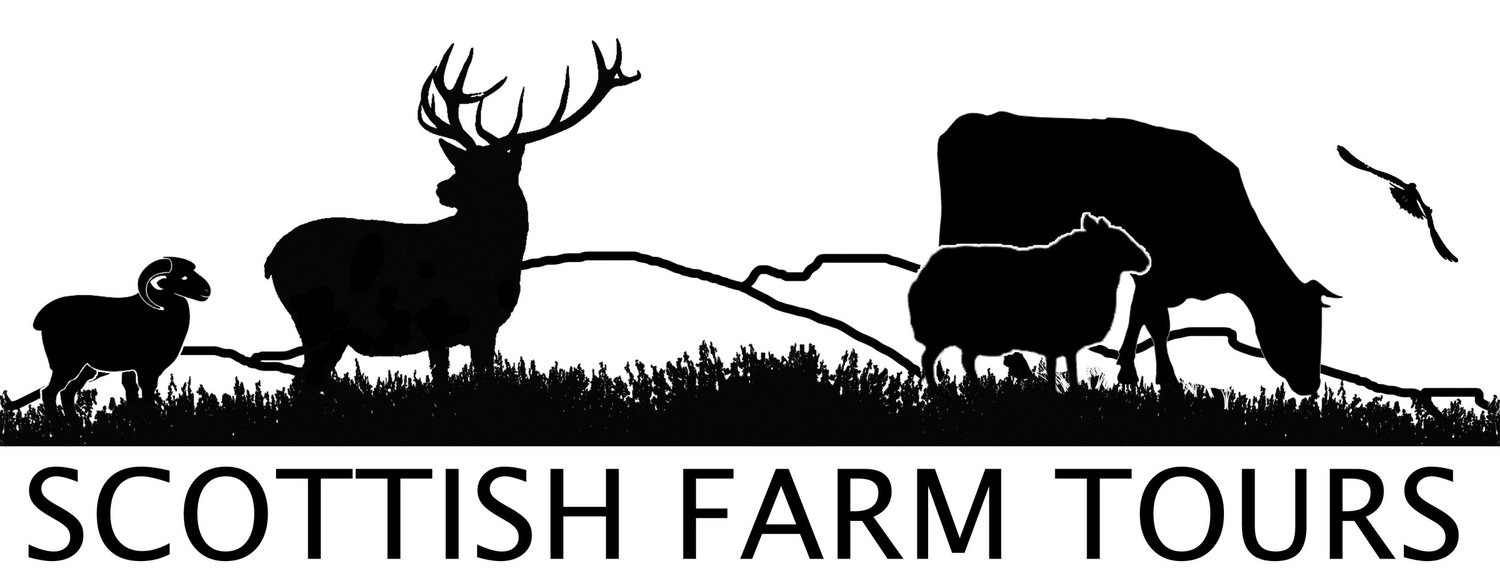Happy New Year from all of us at Ruthven, 2 legged and four legged!
Winters in this part of the world can be very long – sometimes we are under snow for months on end, but this year has been relatively mild so far, with temperatures swinging between freezing and 10 degrees Celsius.
In November, tups were put in with the main flock. Tups are put into groups of ewes at the ratio 1 tup to 40 ewes, and every day the sheep are moved around a bit in their fields to make sure all ewes that are in season are noticed by the tups. Tups are left in for 34 days – ewes come into heat every 17 days at that time of year so this gives each ewe 2 chances to be mated (sometimes they may be missed the first time or not become in-lamb from the first mating). Then the tups are taken inside and pampered with extra food and a nice strawed pen, to help them regain body condition lost during their busy few weeks when they expended a lot of extra energy, and probably didn’t spend the time eating that they needed. The pedigree sheep were tupped in October, so in mid-December we had them scanned to see how many lambs each ewe is carrying. The results were good, and we look forward to welcoming the first of the lambs from mid-February.
Bluefaced Leicester ewe in the crate for scanning
Rory the scanner sits in the wee compartment to the right, where he has a computer and screen. The process is much the same as in humans - he holds the ultrasound probe under the ewe’s belly and moves it around to get an image on the screen of her uterus – the difference is that he is expecting multiple foetuses as a norm! It is a stress-free and non-invasive procedure for the ewe and the information provided means that we can cater for each individual ewe’s needs during late pregnancy. Ewes are colour-marked according to what they are carrying – red for singles, green for triplets, and blank for twins as they are the most common. Then we can easily separate the ewes into groups according to what they are carrying and feed them appropriately. It takes a lot of calories to carry three growing lambs, maintain bodyweight and still have the reserves to produce milk to feed them after birth, but too many calories fed to a ewe carrying a single lamb result in an overfat ewe and a lamb that is too big to be born naturally. So scanning is a vital tool for the farmer.
Little and Large! Ryeland and Bluefaced Leicester ewes watching to see what's happening at scanning.
Bluefaced Leicesters at tupping time – “I wonder if there’s any food in here…..”
Yeti the Ryeland tup with his raddle harness on.
Blue faced Leicester meets Scottish Blackface!
Ryeland ewe with a heavy load!
The ewes are regularly condition scored throughout the winter, so that thin ones can be taken nearer the farm and given extra food, while fat ones are kept out on the hill where there is less food. The main flock will be scanned in mid-February – always a nervous day as we find out what to expect from that year’s lambing! They will all be dosed for liver fluke and worms and given a booster vaccination against clostridial diseases before lambing. The vaccination is timed so that they pass vital immunity to their lambs in the first milk – called colostrum.
Ewes coming in for body condition scoring.
Meg and Kate keeping an eye on the proceedings!








